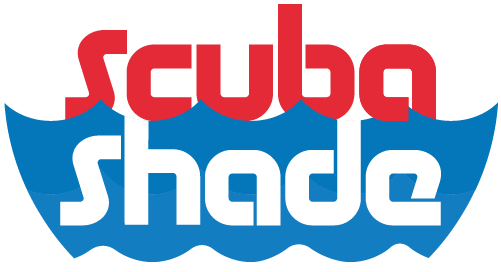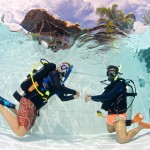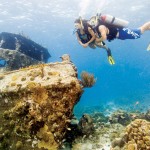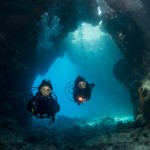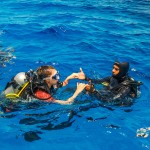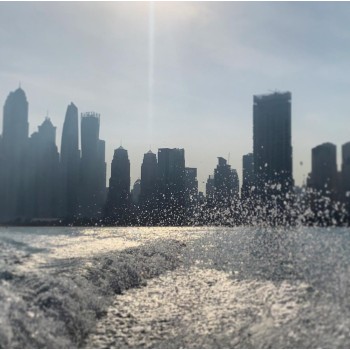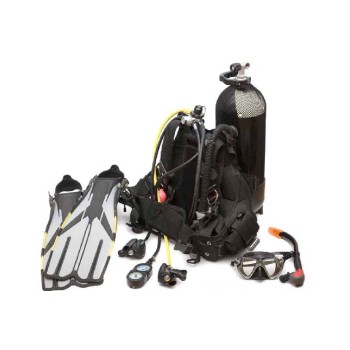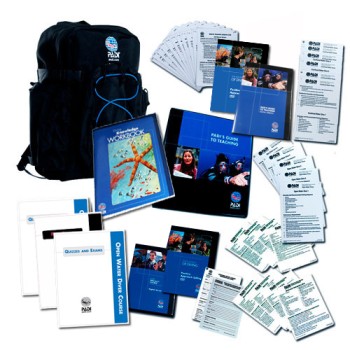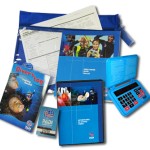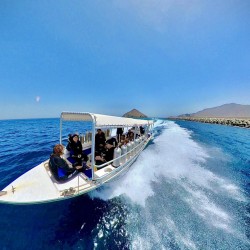Diving in Fujairah is full of corals and marine life. There is also some small ship wrecks. Whether you are certified diver or just starting to learn you enjoy Fujairah waters on the Indian Ocean.
Depth: 20m
Difficulty: Advanced Divers
A beautiful site that makes a memorable dive, especially if you get to see a beautiful and elusive seahorse.
There are many small sites within Anemone Gardens which is a soft coral reef on a sandy seabed, located northeast of Shark Island. You'll find a few meters of depth variation but it's fairly level. These sites are particularly pretty with plenty of green whip coral (which is actually a type of black coral).
Marine life
Shoals of several species of fish congregate around the island from jacks and juvenile barracuda to fusiliers and small schools of squid. You will find hard and soft coral in a kaleidoscope of colors, especially orange and red teddy bear corals. Wispy green whip corals sway in the current. This is an excellent dive spot that offers divers an opportunity to spot a shy seahorse - search carefully but if you find them please do not touch.
Depth: 18m
Difficulty: Open Water Divers
A site to test your navigation skills - with the reward of some unusual marine life.
Car Cemetery is a graveyard for wrecked cars that was created in about 1988 to form an artificial reef and a special site for fishing. There were about 200 vehicles here but following Cyclone Gonu in 2007 the number is more like 50, and the nucleus of the site covers an area of about 60 square meters.
Marine life
Since the visibility is usually poor, it's best to take your time and look for smaller creatures, such as shrimps and Omani clingfish hiding among the feathers tars. This site is considered a nudibranch haven and you'll find numerous species on the wrecks and discarded fishing nets. Look carefully for sea horses and frogfish, as well as small manta rays and the occasional spotted eagle ray. There are also two large resident honeycomb morays that measure about 2m each on these wrecks. Don't dismiss this site because of the low visibility; persevere, look closely, and you never know what you might find.
Depth: 26m
Difficulty: Advanced Divers
Resplendent with colorful corals, this is a great night dive for experienced divers.
Coral Gardens is one of the deepest sites on the east coast and can be an interesting multi-level dive. It consists of a soft coral reef on a sandy seabed and it's located on the north-eastern side of Shark Island. The gardens are difficult to pinpoint unless you follow the correct bearings closely, but if you miss the exact location, don't worry; simply follow the compass bearing back to Shark Island and you'll encounter smaller, shallower reefs on the way that are full of interesting features. The area is resplendent with green colored black whip coral.
Marine life
This location has some unusual soft corals that we haven't seen on other dives. In particular, the delicate soft dandelion coral is fairly common here, as well as clumps of green wispy whip coral. During the winter months, you could be lucky enough to see razorfish (also known as shrimpfish), swimming upside down and darting from one clump of coral to another. You may also see guitar sharks, and large crocodile-fish, with their big flat heads, crocodile shaped mouths and beautiful eyes with frilly eyelids. Sea horses are seen here occasionally, but they are becoming increasingly rare.
Depth: 30m
Difficulty: Advanced Divers
A deep, but attractive coral plate reef with interesting sea life.
Deep Reef was found in late 2001. They have since buoyed the largest of these coral plates to make locating the reef quick and easy, ensuring that you have the maximum amount of time in which to enjoy this picturesque site.
Marine life
As the plate coral rests almost a meter above the seabed it attracts shy marine life: morays who like to hide under the shaded plates and shells, keeping themselves out of direct sunlight. If you look closely, you will see shrimp dancing to attract fish to their 'free' cleaning service. It's a very pretty site with various displays of soft corals; green whip or black coral, large branching bottlebrush corals, teddy bear corals in various colors and several types of sea fans. It's great to see that all of these corals are in excellent condition due to the strong currents that flow through the area bringing it a rich supply of nutrients. They seem to have lined themselves up, row by row, and where one fan ends, another strategically places itself close by to ensure that every nutritional morsel is absorbed from the water.
Depth: 16m
Difficulty: Open Water Divers
A site with colorful corals, where you're virtually guaranteed a sighting of a turtle.
This small rocky island has long sloping sides that are covered by a reef formed by a variety of soft and boulder corals. The side nearest the shore is only 3-4m deep ,so it should be dived at high tide. The seaward side has a long sloping rocky reef with many green and purple whip corals that make it a very attractive dive site. There are two mooring buoys on the site, one located to the north-west end of the site with colorful corals, where you're virtually guaranteed a sighting of a turtle. The buoys are perfectly situated to allow you to dive the seaward side of the site. Just make sure you choose the correct buoy depending on the current
Marine life
You're virtually guaranteed sightings of turtles on this site and you'll see many fish species here too. Look out for the unusual jawfish (or hole goby), noticeable for their rather ugly features - huge heads and large eyes and mouths. They build lovely 'drainpipe' homes, and line the walls with pretty shells to prevent them from collapsing. The drainpipe goes down quite a long way and once the jawfish disappears into it, it takes a long time to reappear. When it's mating season (usually June to August. but it seems to depend on the water temperature), they pop out of their holes. exposing their colorful and beautifully patterned bodies. Be careful of the resident clownfish - they are sometimes rather aggressive while defending their territory; bashing your mask with some force and giving your fingers a nip
Depth: 15m
Difficulty: Open Water Divers
A rocky coral wall that makes a great dive at night, when it's a haven for sleeping fish.
The site is close to where a fuel depot is being constructed and, due to the fact that the mountain behind this area is being levelled to make a harbor, the site still suffers from excessive silt and poor visibility. However, since the completion of the main excavation work, the site does seem to be starting to recover.
Marine life
You'll find all the usual east coast underwater creatures here, along with small shrimp enjoying the ride and meals courtesy of some fat pincushion star fish. Look out for purple finger corals beautifully decorated by brittle stars - it looks a bit like the corals are wearing colorful striped scarves. Take the time to peer between all those urchins and see if you can find an elusive need leshrimp, difficult to see because they blend in with the urchin spines. Turtles are regularly seen here, often with remoras clinging on to their shell. Cuttlefish and batfish seem to be prolific for most of the year, and you might find small stingrays in the middle of the swim-through
Depth: 32m
Difficulty: Advanced Divers
A decommissioned boat that's become home to a wide variety of marine life.
lnchcape 1 - originally known as Gray Swift 2 - was built in the USA by Halter Marine and shipped to Dubai in 1971 or 1972. She started her service in Ras AI Khaimah and in 1991 moved to Dubai where she was renamed lnchcape 1. She was used by lnchcape Shipping Services to transport crew and supplies to and from ships, oil platforms and rigs in both Dubai and Fujairah, and was decommissioned in 2001. General Manager Eric Laing and his colleagues, Captain Joe Finch and Louise Marr of lnchcape Shipping Services decided that the decommissioned boat would be ideal to sink and form an artificial offshore reef. The engines were removed and cleaned of oil residues, and the doors and hatches were taken off. HRH Sheikh Hamed Bin Mohammed AI Sharqi, Ruler of Fujairah, member of the Supreme Council, granted permission for the boat to be sunk. Finally, and with the assistance of Dibba Municipality, Sandy Beach Motel and lnchcape Shipping Services, the boat was relocated to her final resting place, where she has served as a base for new life.
Marine life
From the beginning, fish and a variety of other marine life took up residence on this wreck very rapidly, and they continue to thrive. If you approach slowly and carefully, you can find large rays hiding under the wreck towards the stern . A large shoal of cardinal fish takes up all the space in the safety of the wheelhouse; they are trying to avoid being eaten by the large barracuda and emperor fish that cruise around outside, waiting for an easy meal. You will also see large hammour and several species of moray eels hiding in the tyres. Look out for honeycomb morays, pennant fish, boxfish, soldierfish and red big eyes. The fish life is attracted by the spreading algae. There are more and more fish beginning to congregate on this wreck and you never know what you'll find here!
Depth: 22m
Difficulty: Advanced Divers
Practice your wreck penetration skills and explore this rich marine habitat for its treasures.
The boat was built in the USA by Halter Marine and shipped to Dubai on a Hansa Line vessel in 1974, where she started her service before being moved to Fujairah in 1991. She was renamed in 1993 and eventually relocated to Ras AI Khaimah in 1995. She transported crew and supplies to and from ships, oil platforms and rigs during her working life. Although she had just received a new coat of paint, it was found that she needed considerably more work to make her seaworthy, so the decision was made to decommission her. The artificial reef created when lnchcape 1 was sunk was so successful, and the marine life it attracted in a relatively short time so prolific, that it inspired the lnchcape team, Eric Laing, Captain Joe Finch and Louise Marr to offer lnchcape 2 for the same purposes. This time, the wreck was sunk in shallower waters to make it accessible to the majority of divers. The boat was moved to Fujairah where she was prepared for her new life underwater It took more than two weeks to ensure she was clean of oil residues, and the doors and hatches were removed enable divers to swim through the wreck safely.
Diving
The lnchcape 2 sits listing to her port side in 20-22m with the bow facing 280° degrees. Cyclone Gonu relocated the wreck from her original location and she now sits approximately 40m from the wall between Martini Rock and The Hole in the Wall. It's possible to enter and swim through the whole wreck, end-to-end, but take care as some of the internal fittings have become loose with age. Entry to the engine room can be gained through the after deck hatches. Swim through the living quarters, past the bathroom and when you've seen enough, you can exit via the stairs at either side of the wreck. If you're more adventurous and of medium build, you can exit through the bow hatchway. Take care if you choose this route; while it's quite easy and safe, you need to ensure that your equipment doesn't get snagged. The best way to enjoy this wreck is to go down the buoy line, currently connected to the starboard side of the stern. Move slowly around the vessel and explore the seabed; you'll probably find some large jawfish hiding in the debris. You may be able to make out the ship's name on the stern, although it is now encrusted with calcareous worms and various algae and bryozoans.
Depth: 24m
Difficulty: Advanced Divers
An always-varied and interesting site for trained wreck divers.
This is the third ship lnchcape Shipping Services (ISS) has sunk to form an artificial reef. As ISS is a Fujairah based company, special permission was sought from the authorities and HH Sheikh Hamad bin Mohammed AI Sharqi, Ruler of Fujairah, member of the Supreme Council, gave his approval for the project. The boat, originally named Jetwise, was built in Singapore in 1982 and was initially owned by a company in Bahrain. ISS bought her in 1998 and she was moved to Fujairah where she transported crew and supplies to and from ships and oil rigs. What makes her unusual is that she was propelled by three water jets. As with the other lnchcape wrecks, ISS spent a considerable amount of time and money ensuring the boat was environmentally friendly and equipped for her new life underwater. On the whole, the lnchcape wrecks are considered a success as they've attracted an incredible amount of marine life within a relatively short period of time, and they've taken the burden off some of the other dive sites.
Marine life
Since this wreck was purposely located close to another artificial reef, the fish have homed in on it. In its first few months it acted as a nursery and you could find most species of fish in miniature on it; banner fish, hammour, lionfish, snappers, jacks, filefish, morays and a juvenile snake. It became covered in a layer of hairy, dark red and brown algae and some small calcerated worms began to encrust the su rface areas, particularly on the windows and other glass bits. Now a few years down the line, the marine life on it is constantly changing and every dive holds another interesting discovery.
Depth: 3-22m
Difficulty: Open Water Divers
A pleasing and colorful site that makes you feel like you're diving in an aquarium
Martini Rock is a small, submerged coral outcrop, the top of which is visible from the surface at 3m. The rock has several sandy gullies or alleys and most of it is covered in orange and purple teddy bear coral, which makes for a pleasing and colorful dive site. This is an excellent site for divers of all skill levels, and a favourite east coast location.
Marine Life
Large sections of the rock are covered in red, purple and orange teddy bear corals, with one side swathed in purple whip corals, and green and yellow whip corals in a deep corner. There are also clumps of feather stars that hide shrimps, Omani clingfish and nudibranchs. At night the rock appears completely red because of all the feeding teddy bear corals. Look closely into the soft corals to find fish, such as juvenile damsel fish or hawkfish, that use the coral as a safe haven from the larger hunters that are out looking for dinner. If you stay near the bottom of the rock on the seabed, you may see large rays sifting through the sand in search of small molluscs and crustaceans. They will come right up to you at night and can cause quite a scare. You may also encounter large pufferfish that swim about at night oblivious of their surroundings, bumping around rather as if they were in a pinball machine! Don't shine your torch at them for too long, as they'll become completely disorientated. At night you could come across a strange looking fish called a long finned waspfish (a type of gurnard) They appear to run over the seabed on three spiderlike legs, that are hidden undern eath their winged fins. They have two pronged feelers extending from their mouths that they use to search for creatures hidden in the silty seabed.
Depth: 16m
Difficulty: Open Water Divers
A great spot for chilling on the beach, diving, snorkeling and, yes, spotting a shark.
This fairly large island stands proud at the south-eastern end of the magnificent Khor Fakkan bay. It has a great beach for picnicking on, to dive and snorkel from, or simply to spend a relaxing day in the sun.
Marine Life
As the name suggests, this is a good place for sharks; particularly blacktip reef sharks that can be seen between November and April on the eastern point of the island. On the seabed you may see cerianthid anemones, pretty purple or white fronds sticking out of a cardboard looking tube. Don't disturb or touch them as they'll retract down into their tubes. This area is also the haunt of many schools of fish, from batfish and juvenile barracuda to big mouth mackerel, as well as cute pufferfish, large rays with remoras following them, and the occasional spotted eagle ray in shallower water. During the winter months, you may sometimes see murex shells laying their straw-like eggs under the rocks.
Depth: 14m
Difficulty: Open Water Divers
Rich in marine life, this is a great site for leisurely sightseeing, particularly at night.
Not far from Snoopy Island and the Sandy Beach Motel are these four small outcrops of rock that just break the surface of the water at low tide. They are covered in masses of soft corals and there is a small table coral reef towards the shore in about 4m of water. Note that navigation can be difficult here as the small sandy gullies or alleys leading between the rocks can be misleading and disorientating. A single mooring buoy can be found on the north side of the rocks sitting in around 8m of water; it is advised to use the mooring as throwing an anchor can cause significant damage to the large reef extending from the site.
Marine Life
These rocks are full of shoals of fish; jacks, big mouth mackerel, fusiliers and sometimes squid. You may also see turtles, morays, crayfish and guitar sharks. Explore the bottom for moses soles their mottled scales provide excellent camouflage against the seabed. All that gives them away is the tiny gold flecks on their bodies. In early evening at the beginning of the warmer months, you can see the strange and beautiful mating habits of boxfish and cuttlefish. At the same time, look out for the small, but fierce, clownfish defending their anemone host, which hides and protects their brood of eggs. Clown fish look cute, but resist the temptation to touch them.
Depth: 8m
Difficulty: Open Water Divers
Marine life on your doorstep! It doesn't get much more accessible than this.
Named because it's shaped like Snoopy lying on his back with his nose in the air (if you've a vivid imagination), the slopes of this small island are covered by several varieties of hard coral that are home to a wealth of anemones and clownfish. At high tide, it's a good 10 minute swim to the edge of the island. However, during November there are unusually high and low tides that make it possible to walk to the island without getting wet.
Marine Life
There's a lot of marine life to see, although there's less coral on the shore side than on the seaward side. You can expect to see big mouth mackerel, morays, anemones, clownfish and lionfish. You may also see turtles and sharks. Look out for smaller marine life such as pipefish, shrimps, crabs, and nudibranchs, too.
Book a trip
Stock: In Stock
Boat Dive Trip in East CoastJoin Scuba Shade on our 35ft dive boat to explore the remarkable diving sites in East Coast.Diving in Fujairah is availabl..
from
AED 351
Ex Tax:AED 334

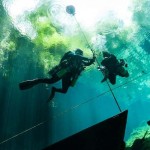
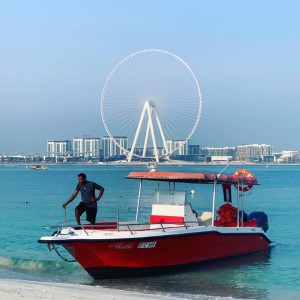
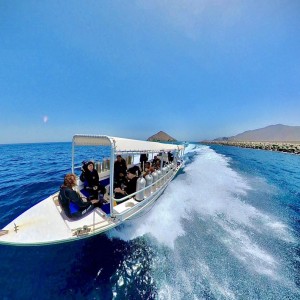
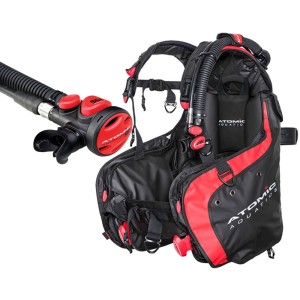
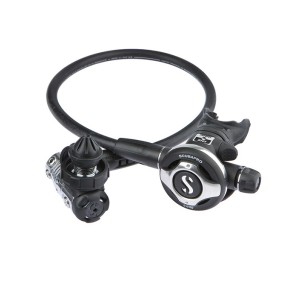
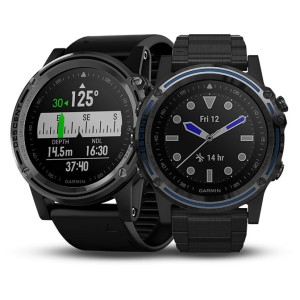
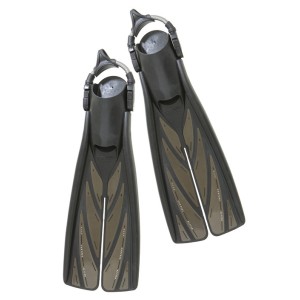
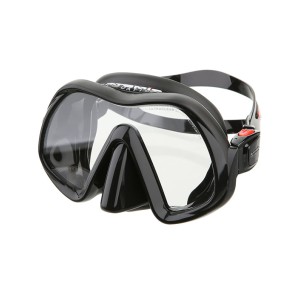
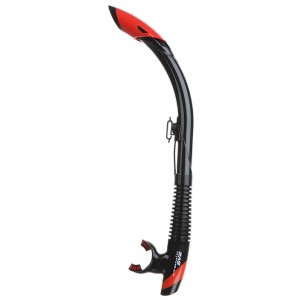
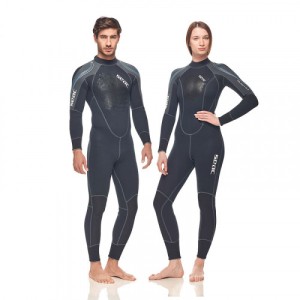
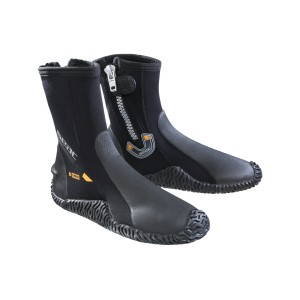
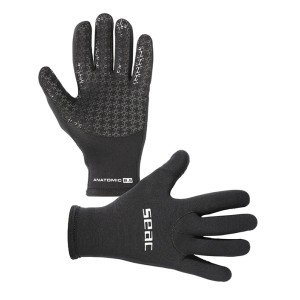
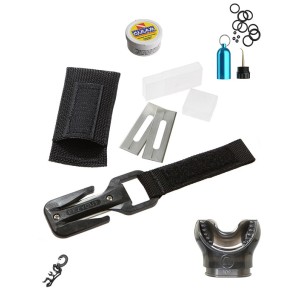
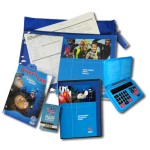
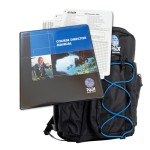



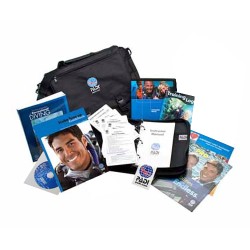
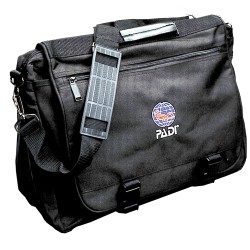
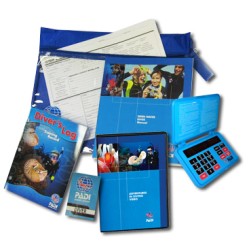
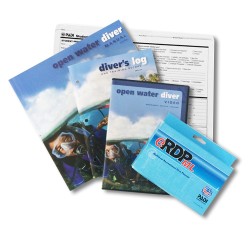
-870x812-250x250w.jpg)
-870x812-250x250w.jpg)
-870x812-250x250w.jpg)
-870x812-250x250w.jpg)
-870x812-250x250w.jpg)
-870x812-250x250w.jpg)
-870x812-250x250w.jpg)
-870x812-250x250w.jpg)
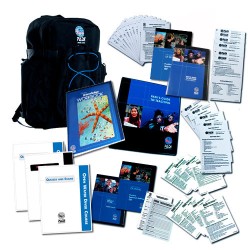

-870x812-250x250w.jpg)
-870x812-250x250w.jpg)
-870x812-250x250w.jpg)
-870x812-250x250w.jpg)
-870x812-250x250w.jpg)
-870x812-250x250w.jpg)
